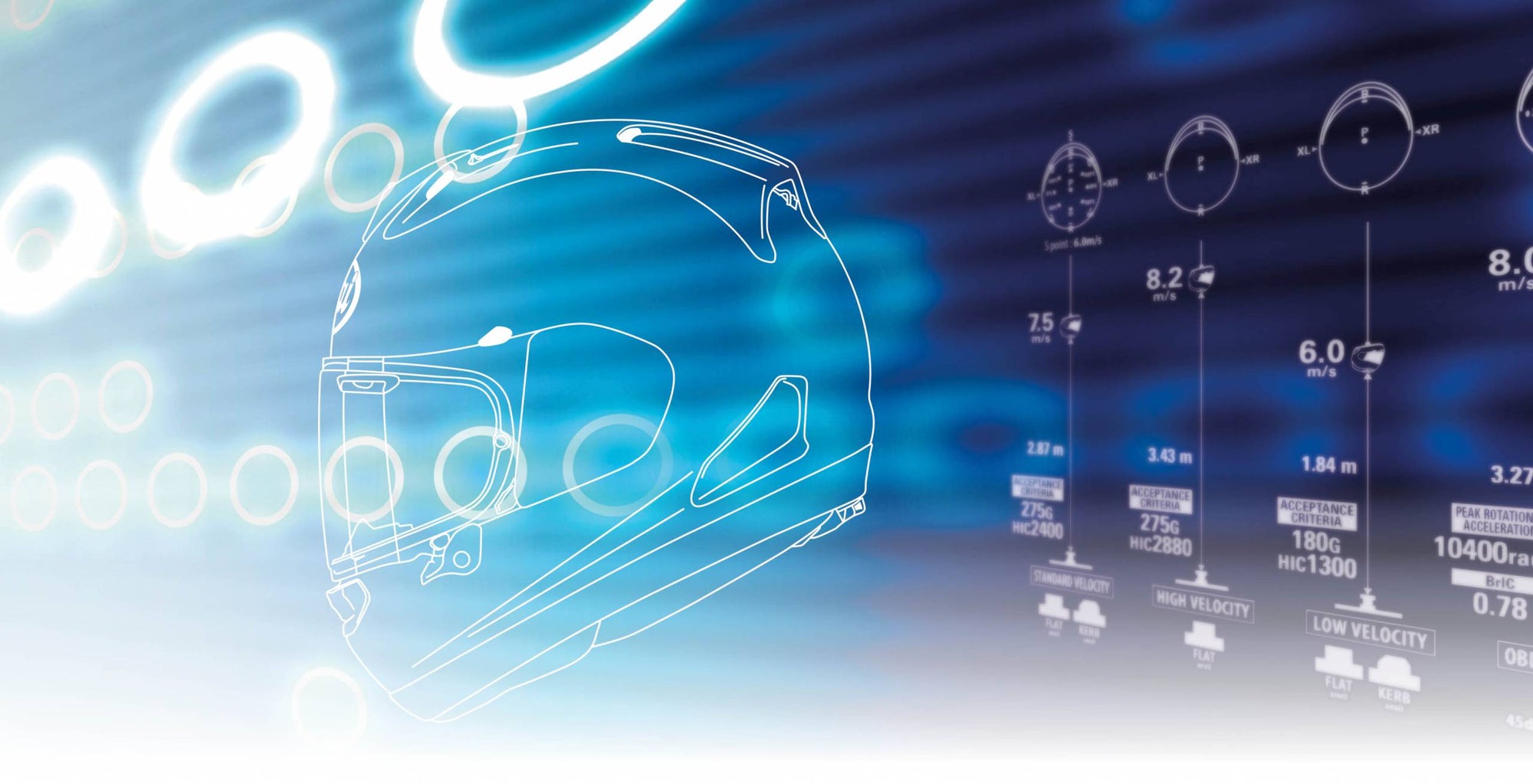ECE R22-06
Since 2003, ECE R22-05 has been the mandatory motorcycle helmet homologation in Europe and countries outside Europe where it has been adopted. After 18 years it has been updated to ECE R22-06. With the introduction of ECE R22-06, the regulations have become more stringent and therefore tougher to pass than the previous ECE R22-05. These changes pose a big challenge for helmet manufacturers.
What has changed with ECE R22-06?
ECE R22-06 has several differences with R22-05. The biggest changes are listed below
| Additional impact points: New to R22-06 is the addition of 12 impact points. Previously there were only 5 fixed impact points (6 when including the S point) on which a helmet was tested. Now there are 12 extra impact points from which at least 3 points are randomly selected and tested. |
 |
 |
Additional impact tests: A high velocity and low velocity impact absorption test have been added, in addition to the standard velocity impact absorption test. The high velocity impact test is performed at an impact velocity of 8.2 m/s and the low velocity impact test is performed at 6.0 m/s. The impact speed on the S point has been increased from 5.5 m/s to 6.0 m/s. Addition of the Oblique Impact test: The Oblique impact test has been added to measure the amount of rotational acceleration during an impact. The oblique impact test is performed at an impact velocity of 8.0 m/s, where a helmet is dropped onto a 45 degrees oblique anvil. |
Information from Arai
Please click here for Full Article

